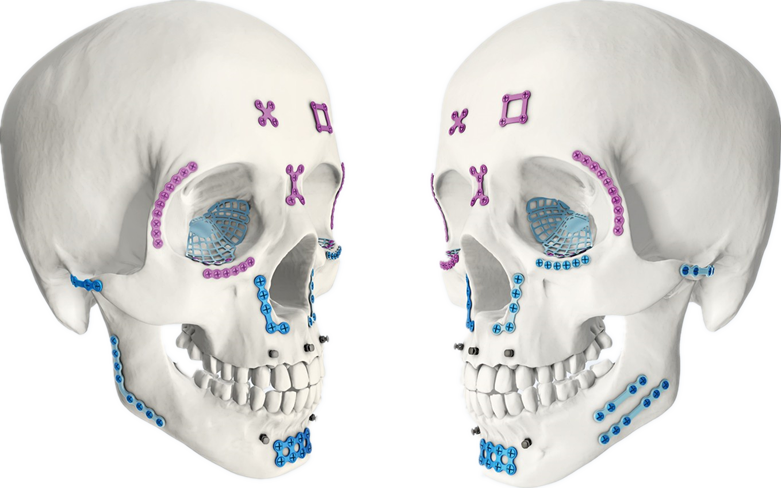Locking maxillofacial plates are fracture fixation devices that utilize a locking mechanism to hold screws and plates together. This provides more stability and rigidity to the broken bone, especially in complex and comminuted fractures.
Depending on the design of the locking system, locking maxillofacial plates can be divided into two main types: threaded locking plates and tapered locking plates.
There are corresponding threads on the screw heads and plate holes of the thread locking plate. Match the size and shape of the screw head with the plate hole, and tighten the screw until it is locked with the plate. This creates a fixed angle structure that prevents the screws from loosening or becoming angled.
The screw heads and plate holes of tapered locking plates have a conical shape. The screw heads and board holes are slightly different sizes and shapes, insert the screw until wedged against the board. This creates friction that holds the screw and plate together.
Both types of locking maxillofacial plates have their own advantages and disadvantages. Threaded locking plates allow for more precise alignment of the screws and plate, but require more time and skill to insert the screws exactly into the center of the plate holes. Tapered locking plates allow for greater flexibility and ease of screw insertion, but it may cause greater stress and deformation of the plate.
Locking maxillofacial plates also come in different shapes and sizes depending on the location and severity of the fracture. Some common shapes of locking jaw panels are:
Straight plate: used for simple, linear fractures such as symphysis and parasymphysis fractures.
Bending plate: used for curved and angular fractures, such as angular fractures and body fractures.
L-shaped plate: used for angular and oblique fractures, such as ramus and condylar fractures.
T-shaped steel plate: used for T-shaped and bifurcated fractures, such as alveolar bone and zygomatic bone fractures.
Y-shaped steel plate: used for Y-shaped and trifurcated fractures, such as orbital and nasal orbital fractures.
Mesh plate: used for irregular and comminuted fractures, such as forehead and temporal fractures.
Locking maxillofacial plate is an advanced and effective technology for the treatment of maxillofacial fractures. It provides better stability, healing and aesthetics than traditional non-locking plates. However, it also requires more expertise, equipment and cost than non-locking plates.Therefore, the choice of locking maxillofacial plates should be based on the individual needs and preferences of the patient and surgeon.
Post time: Feb-22-2024
